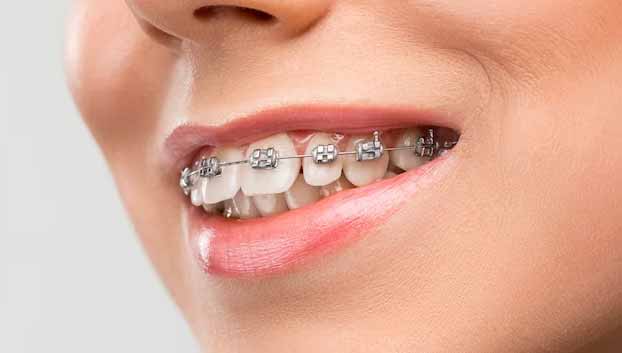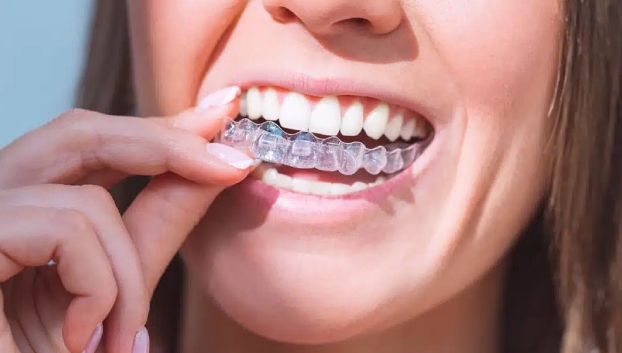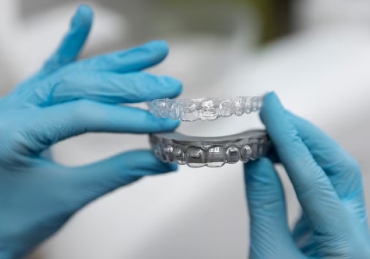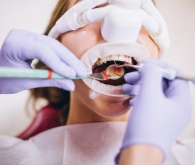
Best Orthodontic Treatment Clinic in Newtown, Kolkata
What is Orthodontics?
Different Types of Braces

Traditional Metal Braces
Traditional metal braces are a common orthodontic treatment used to straighten teeth and correct bite issues. They work by applying continuous pressure on the teeth, encouraging them to shift over time.

Clear Aligners
Clear aligners are a modern orthodontic treatment designed to straighten teeth using a series of custom-made, removable, transparent plastic trays. These aligners gradually shift the teeth into the desired position without the use of metal brackets or wires.

Ceramic Braces
Ceramic braces are a type of orthodontic appliance similar to traditional metal braces, but they use clear or tooth-colored ceramic brackets instead of metal ones. This makes them less noticeable and more aesthetically pleasing, particularly for people who are conscious of the appearance of traditional metal braces. They provide the same level of effectiveness as traditional metal braces

Lingual Braces
Lingual braces are a type of orthodontic braces that are placed on the back (tongue-side) surface of the teeth, making them virtually invisible from the outside. Unlike traditional braces that are bonded to the front of the teeth, lingual braces are attached to the back, offering a discreet way to straighten teeth without affecting your smile’s appearance.
Timings
 Monday : 10am to 8:00pm
Monday : 10am to 8:00pm
 Wednesday : 10am to 8:00pm
Wednesday : 10am to 8:00pm
 Friday : 10am to 8:00pm
Friday : 10am to 8:00pm
 Sunday : 10am to 8:00pm
Sunday : 10am to 8:00pm
 Tuesday : 10am to 8:00pm
Tuesday : 10am to 8:00pm
 Thursday : 10am to 8:00pm
Thursday : 10am to 8:00pm
 Saturday : 10am to 8:00pm
Saturday : 10am to 8:00pm
Locations
Let Us Get Back to You!!
Most Common Orthodontic Problems
⦿ Overbite: When the upper teeth extend significantly over the lower teeth.
⦿ Underbite: When the lower teeth protrude beyond the upper teeth.
⦿ Overlapping Teeth: When teeth overlap each other.
⦿ Crowded Teeth: When there isn’t enough space for all teeth to fit properly in the mouth.
⦿ Crooked Teeth: Teeth that are not aligned properly.
⦿ Rotated Teeth: Teeth that are twisted out of their normal position.
⦿ Impacted Teeth: Teeth that are partly or fully trapped within the jawbone.
Types of Orthodontic Treatments

Orthodontic Braces
Braces gradually move your teeth into their optimal positions using a combination of brackets, bands, and wires. There are different types of orthodontic brace treatments to suit individual needs, such as traditional metal braces and clear ceramic braces.

Clear Aligners
Clear aligners offer a popular alternative to traditional braces. You wear each set of aligners for one to two weeks before progressing to the next set, gradually shifting your teeth into their correct positions.

Orthodontic Retainers
After completing treatment with braces or clear aligners, you will need a retainer to keep your teeth from shifting back to their original positions. A retainer is a custom-designed oral appliance, and your orthodontist will offer guidance on how often to wear it to maintain the results of your treatment.
Benefits of Orthodontic Treatments

Improved Alignment of Teeth and Jaws
Orthodontic treatment helps correct misaligned teeth and jaw problems, such as overbites, underbites, crossbites, and open bites.

Enhanced Smile
One of the most visible benefits of orthodontic treatment is an improved smile. Straighter teeth create a more aesthetically pleasing appearance.

Improved Oral Function
Correcting teeth alignment through orthodontic treatment enhances bite function.

Reduced Risk of Tooth Decay and Gum Disease
Misaligned or crooked teeth can create hard-to-reach areas in your mouth where plaque and bacteria accumulate.
Frequently Asked Questions (FAQs)
Who Provides Orthodontic Treatment?
Usually, orthodontic treatments are performed by orthodontist doctors, who are dental specialists with around two to three years of additional training beyond dental school. Their expertise lies in correcting bite issues and improving tooth alignment. Unlike general dentists, orthodontists do not perform routine dental procedures like fillings, crowns, or bridges.


